Walk Across Kentucky (WAKY) Native Plant Collection Updates
Walk Across Kentucky (WAKY) Native Plant Collection Updates

Arboretum Woods Restoration Updates
What’s going on in The Arboretum Woods? In contrast to the rest of The Arboretum, the trees, shrubs, and other plants in this natural area were not planted Arboretum staff. This collection represents one of the few remnants of a unique Inner Bluegrass Woodland ecological community and our native plants team has embarked on a project to restore the native plant diversity and habitat of this area.

|
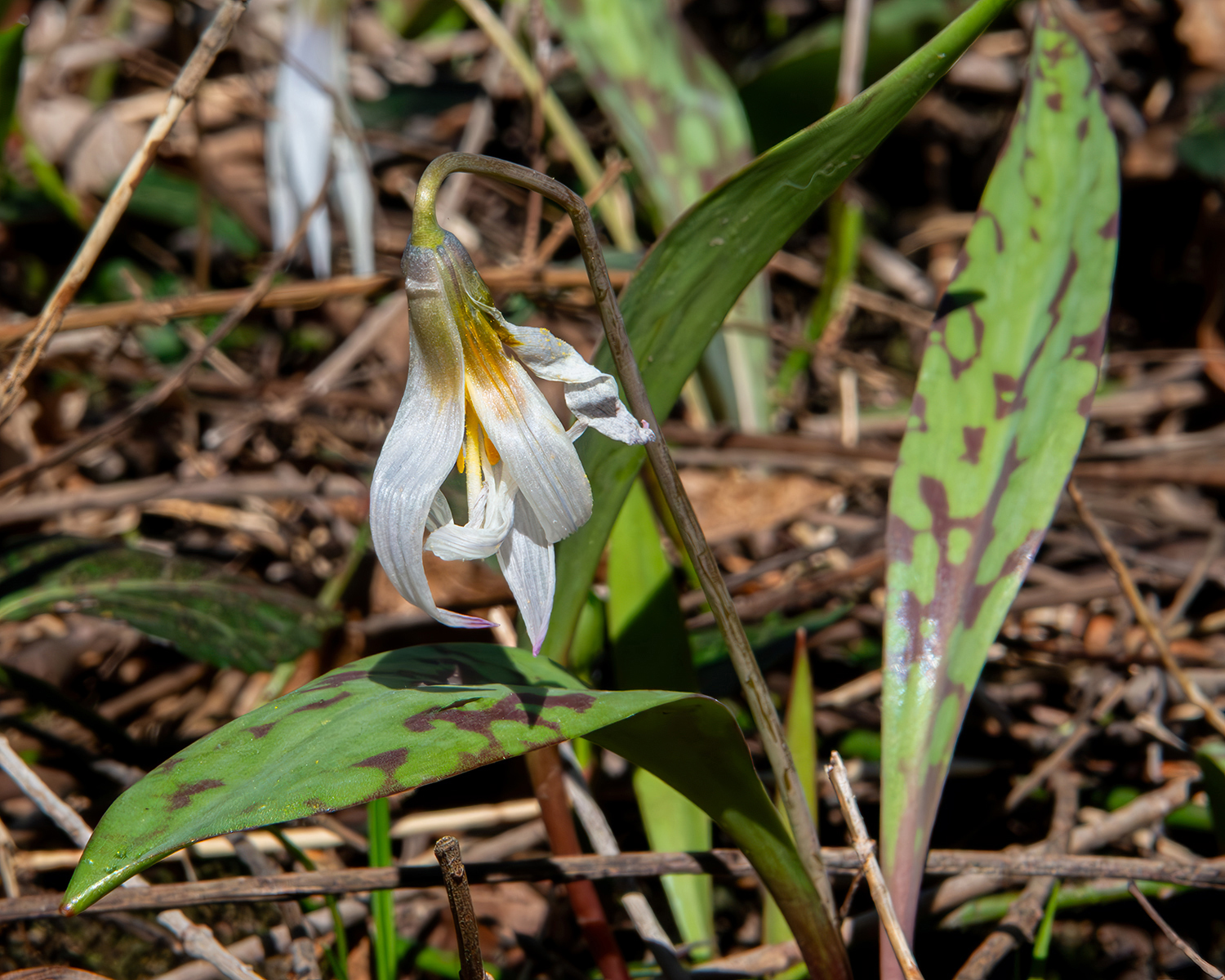
|
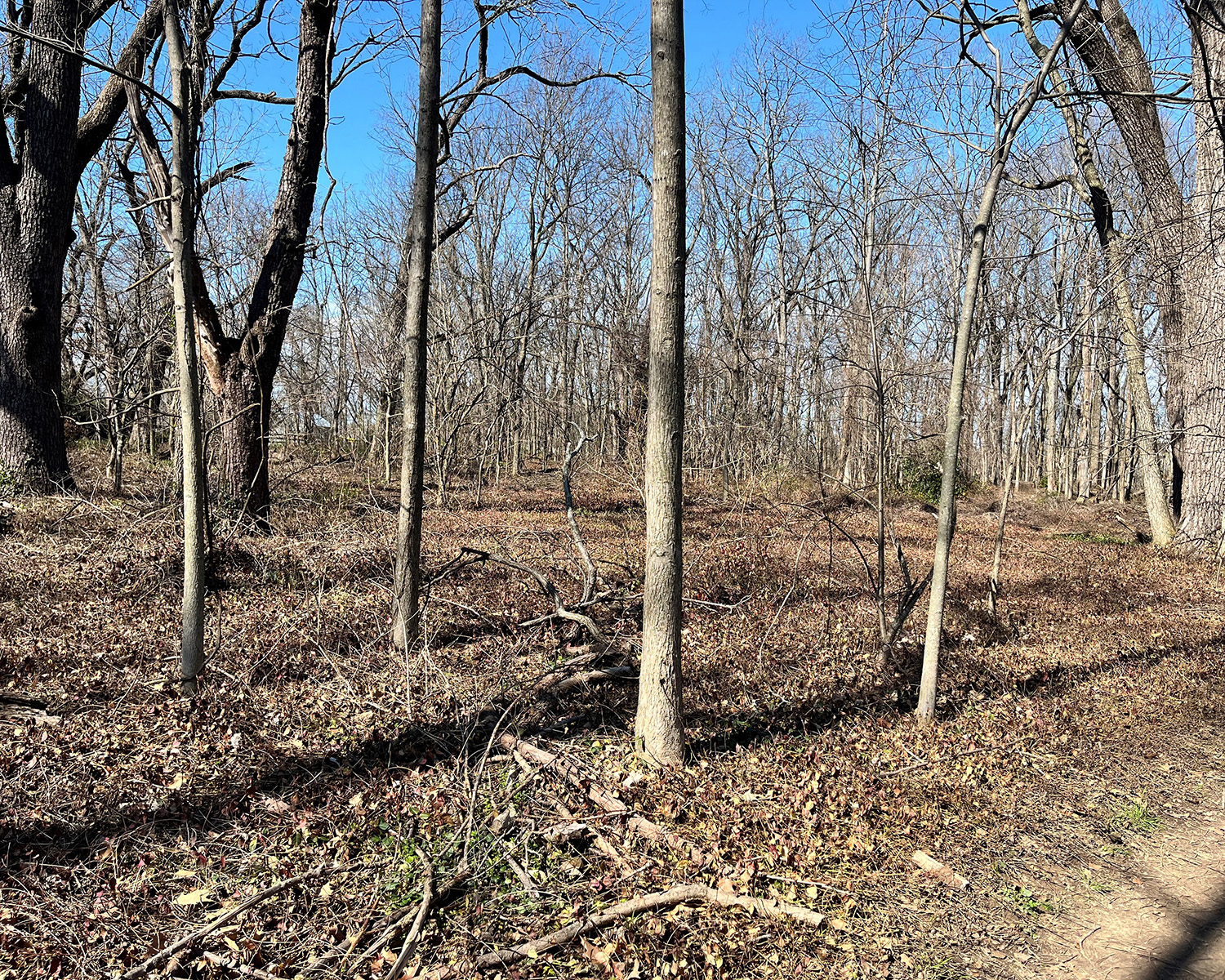
|
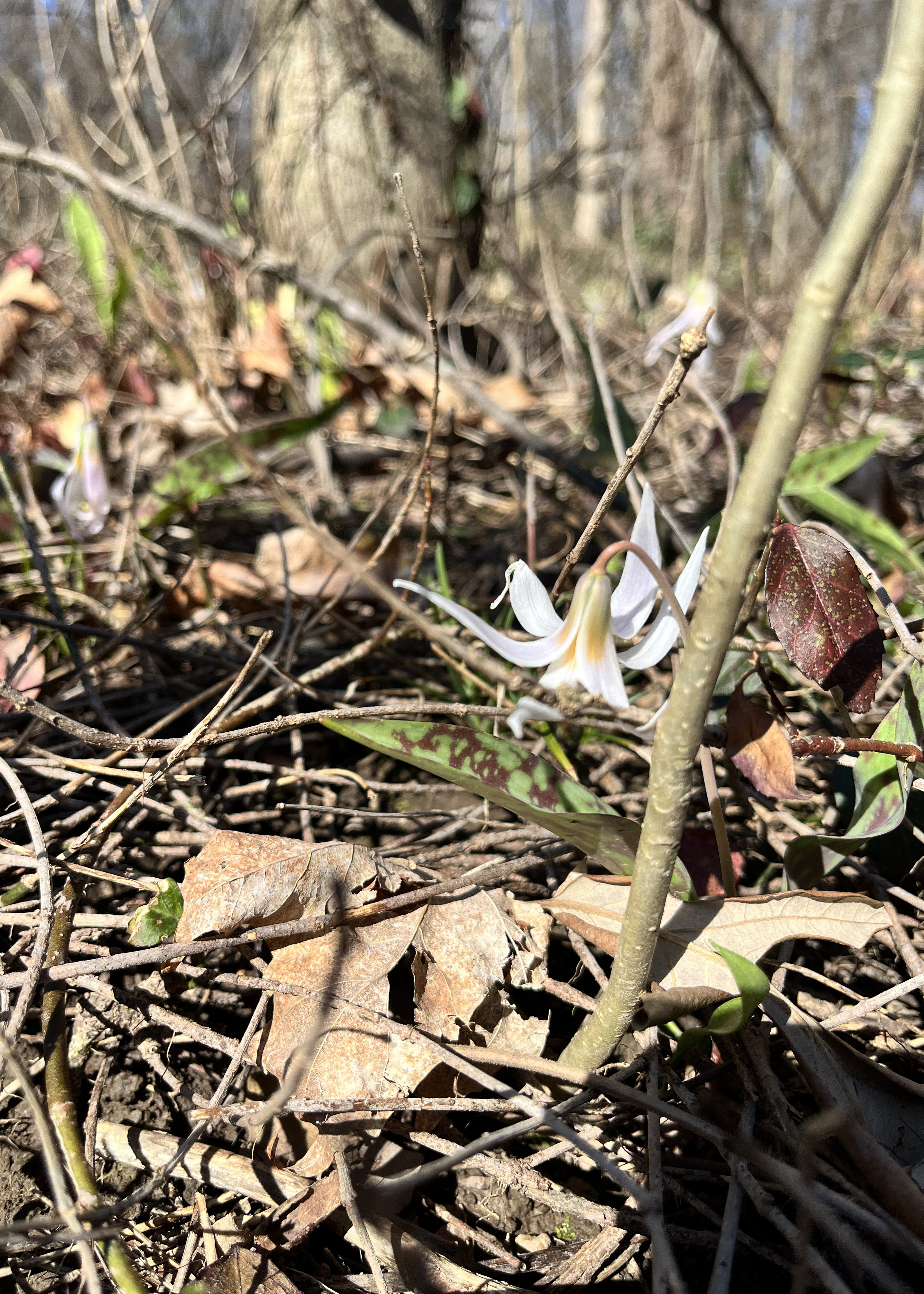
|
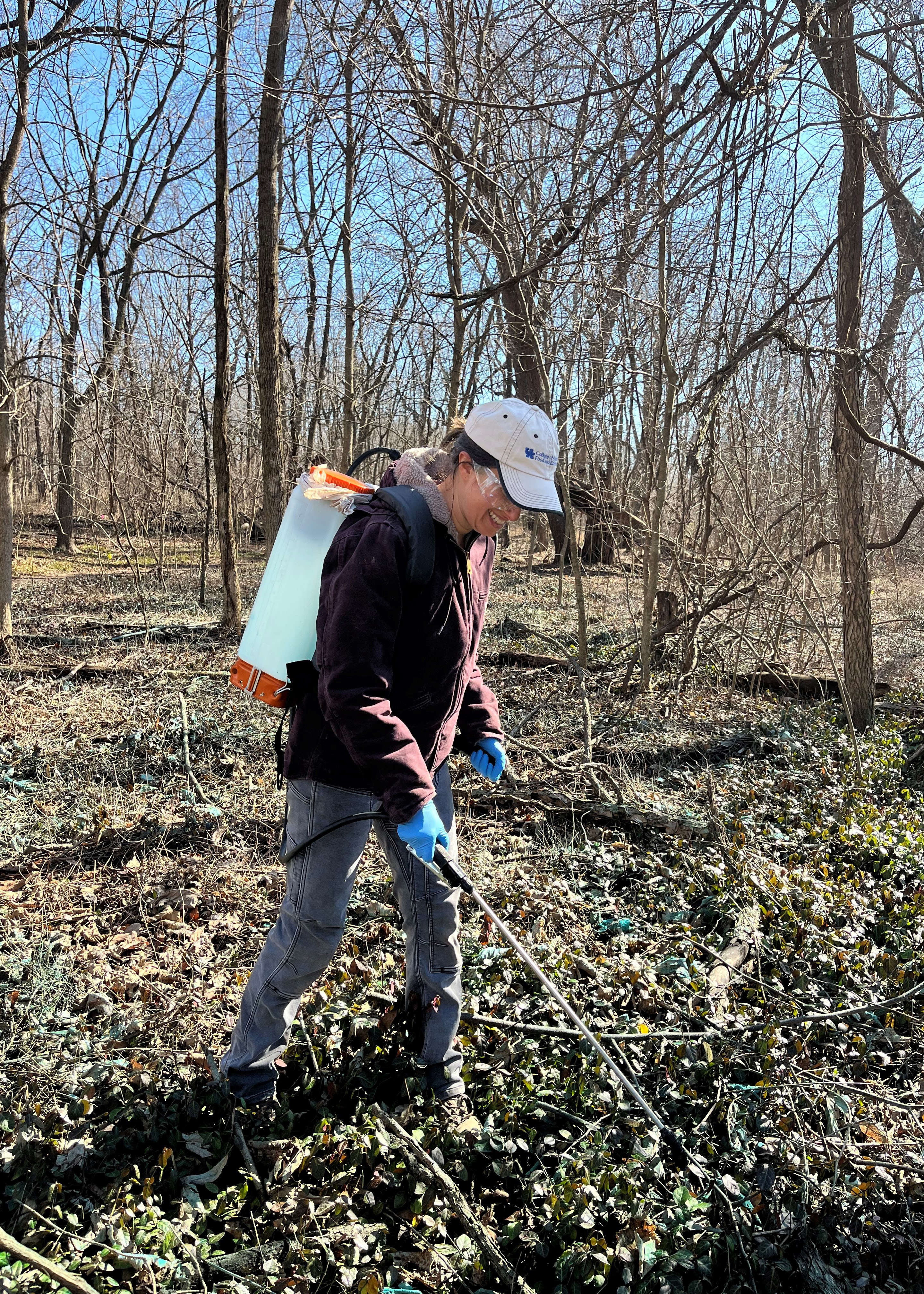
|

|
Long-time visitors may already be familiar with the efforts that Arboretum staff and volunteers have made over several decades to manage some of the invasive species that have impacted this woodland. A few of these threats have included Amur honeysuckle, privet, Italian arum, and of course – wintercreeper! This evergreen vine has carpeted the ground in the Arboretum Woods, leaving little room for other species to grow. Wintercreeper deters recruitment of trees from the overstory – for instance, when an oak drops its acorns, they are unlikely to receive enough light through the carpet of wintercreeper to germinate and grow on to become our next generation of trees.
Thanks to a 2023 grant from the Beckham Bird Club of Louisville and individual donations to the Walk Across Kentucky, we have been more aggressively working to restore this natural area over the past year. The first step in trying to get more diversity in the understory as well as recruitment of native trees and shrubs is to manage the wintercreeper. We do this through a combination of methods. Staff and volunteers manually remove small patches of wintercreeper and cut the vines from trees to prevent them from producing and dispersing seed. We manage larger areas by treating the vines with a foliar application of a selective herbicide during the dormant season. This application is timed for when other plants are sleeping so that we minimize our impacts on desirable species in the woods.
During this past winter, Arboretum staff and contractors from the local consulting group EcoGro managed approximately 11 acres of wintercreeper in The Arboretum Woods. This is a long-term ecological restoration project with slow but steady rewards. Because about seven of these acres had been managed previously, we are already seeing early signs of success in the understory – native plants have begun to move into these managed areas and some spring ephemerals that had been lying dormant for years are finally showing themselves again.
Because this woodland has been degraded for decades, we won’t rely on restoration from the seedbank alone – we are busy planning seed collections from local natural areas that have similar plant communities. We will use the native seed that we collect to try to increase the diversity of this natural area through a combination of direct sowing and propagation of native plants in our greenhouse and nursery followed by transplanting those plants into the woods. Our goal is a more diverse, ecologically healthy, and beautiful forest – more native plants will also help support more native insects and wildlife.
How can you help? Removing or preventing seed production from invasive species on your own property can help prevent their invasion into our cherished natural areas. You can also spread the word about the impacts of invasive species and, when deciding what to plant in your own garden, select native plants or ornamental plants that are not known to be invasive. Finally, if you’d like to contribute to the restoration of The Arboretum Woods, consider giving to the Arboretum Walk Across Kentucky gift fund. Our team relies on grants and donor contributions to make this work happen.
Want to learn more about The Arboretum Woods? Arboretum Curator Jess Slade will be leading a walk through the woods on April 4, 2024, at 5:30PM as part of our Naturalist Series of programming. Attendees will learn about this unique ecosystem, including how to identify the different trees in the canopy and the wildflowers on the forest floor. We’ll also discuss how this natural area is managed to support an ecologically diverse ecosystem. The $10 program fee helps support the work of Arboretum staff. Register by emailing arboretum@uky.edu!
Prescribed Fire at The Arboretum
In March, The Arboretum partnered with the Office of Kentucky Nature Preserves and Floracliff Nature Sanctuary to implement a prescribed burn of two meadow plantings on our grounds. The plant communities that these meadows represent are historically adapted to natural disturbances such as fire and the grazing of large ungulates like bison. We manage these areas with prescribed fire to simulate those natural disturbances.

|

|
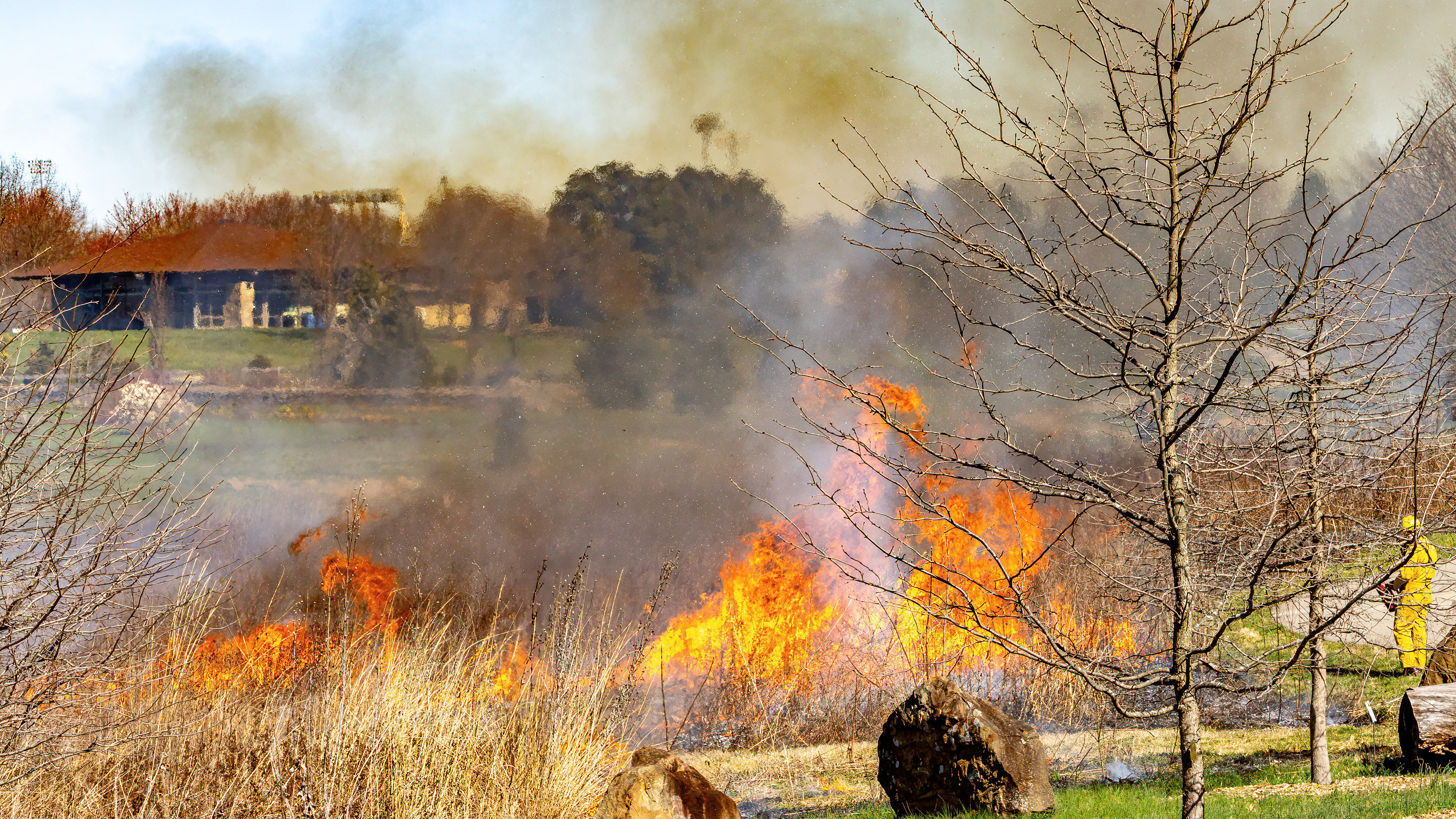
|
The Arboretum’s meadows provide important habitat for urban wildlife while showcasing Kentucky’s natural heritage – in addition to more common pollinator-friendly plants, there are several conservation plantings of rare species in these areas – including plants like Eastern prairie blue wild indigo (Baptisia aberrans) and royal catchfly (Silene regia).
Prescribed fire is an important tool for managing open areas and protecting Kentucky’s natural heritage. It helps to remove the thatch that builds up from the grasses and wildflowers over time – this allows native seeds to contact the soil surface and helps prevent the sun-loving plants from getting shaded by the thatch. Prescribed fire also deters the encroachment of woody plants into the meadow that would, without management, eventually shade out the area and become a forest. Finally, this prescribed fire is an important tool for invasive species management in this type of community – fire itself can help knock back certain invasive species while opening the area for easier management access during the following growing season.
We are thankful for our partners and volunteers who helped make this prescribed fire happen! Being in an urban area presents unique challenges to this type of ecological management and we could not have done this without the trained professionals who helped to implement the burn. The event went off without a hitch and we can already see the grasses and wildflowers beginning to emerge and paint the meadows green again.
Winter Work
Our grounds staff often hear the question, “what do you do in the winter?” Although winter may be a quiet time for plant growth and photosynthesis, our team keeps busy maintaining our woody plant collection, propagating plants in the greenhouse, doing invasive species management, updating our plant records, and doing lots of planning! Winter is also a great time to catch up with all the work that we couldn’t get to during the growing season.
The dormant season (December through March) is an ideal time to prune woody plants – the bare branches of deciduous trees and shrubs help us to see their structure. The types of pruning that we do include removal of dead and diseased branches, removal of hazardous limbs, and structural pruning to improve the long-term vitality and structural integrity of our trees. Since we have a limited number of staff and equipment, our team focuses on the work that can be done from the ground – especially small tree and shrub pruning and limbs we can reach with a pole pruner. This season, thanks to special funding support from M-G CAFE, we outsourced some of our larger tree work to Big Beaver Tree Service. Their team of knowledgeable arborists with professional equipment have made a tremendous impact on the care of our mature trees!
We also spend a lot of time in the greenhouse – we sow seeds and pot up plants as they germinate and grow. Many of the native seeds that we collected in the Fall of 2023 are now actively germinating and growing at UK’s Horticulture Research Farm. Watching these plants grow after the process of finding and collecting the seed is a truly rewarding and hopeful sign for the spring to come. Visitors can look for these new additions to The Arboretum’s collection in the coming seasons!

|

|
|
